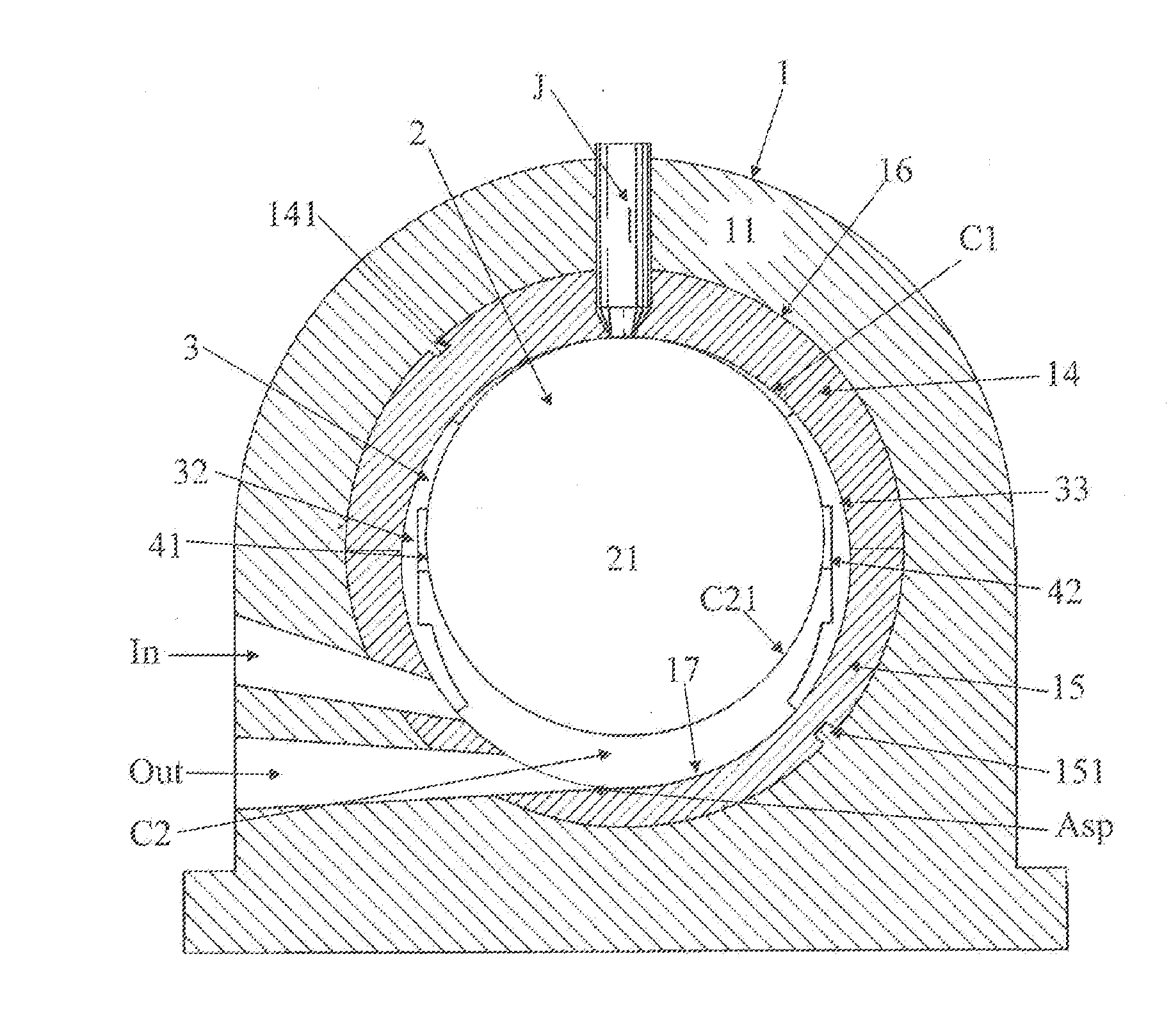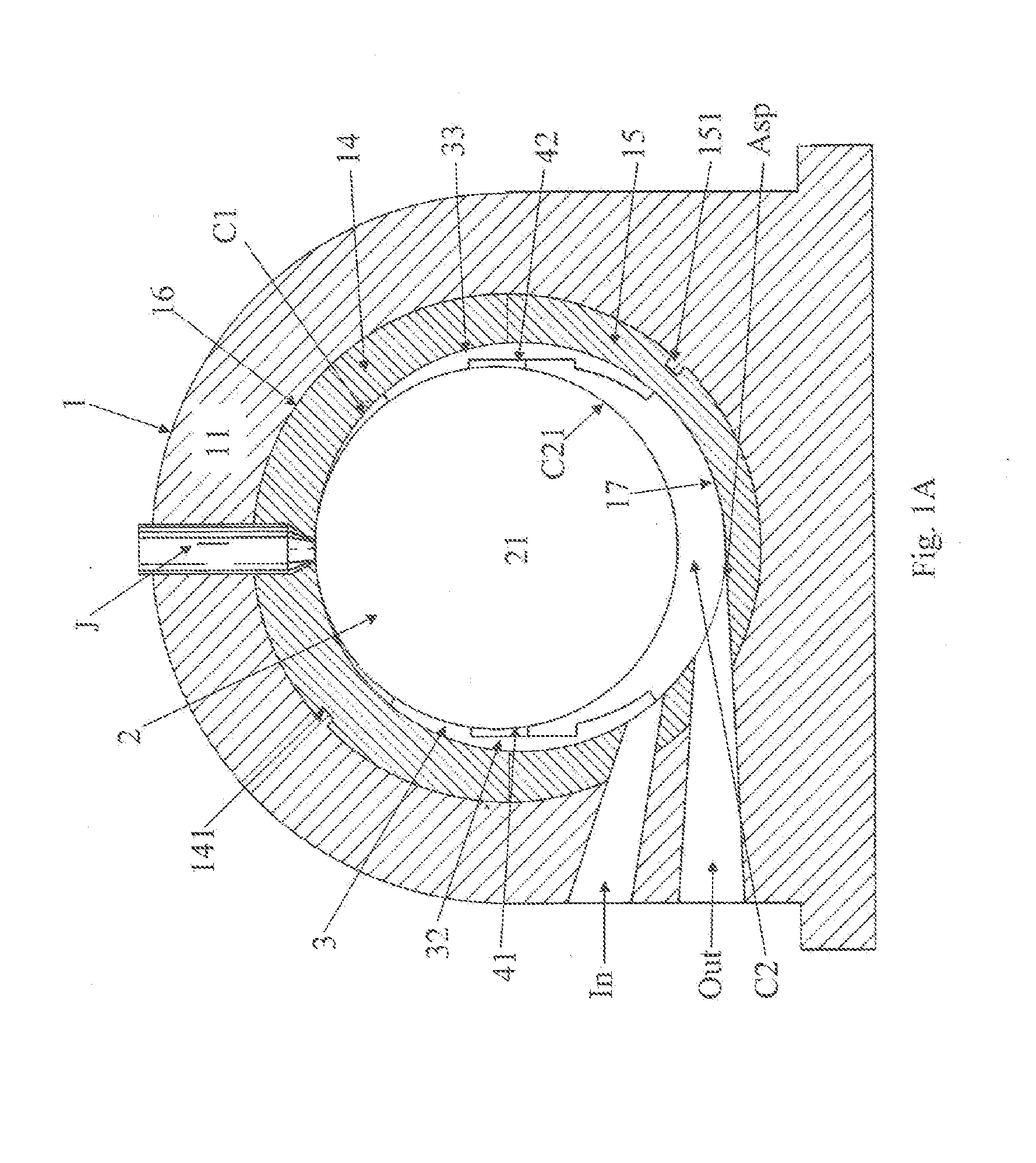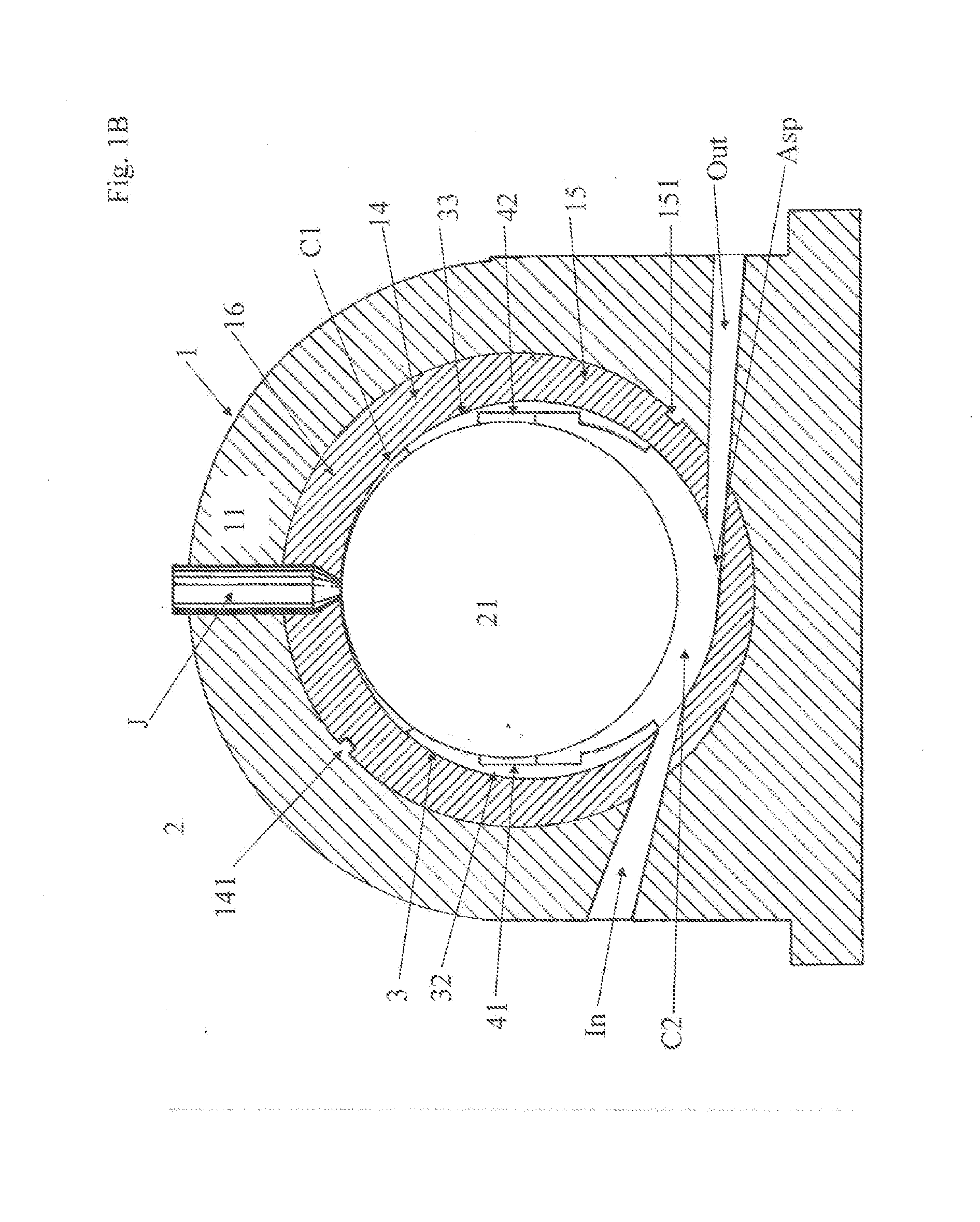Rotary two-stroke internal combustion engine, particularly very high power very high speed engine fueled by solid particulate fuel like coal dust, destined for power generation
a technology of internal combustion engine and rotary two-stroke, which is applied in the direction of internal combustion piston engine, machine/engine, mechanical equipment, etc., can solve the problems of inability to meet the requirements of primemovers, inability to meet the overall efficiency of steam turbine power plants, and complicated technology and more expensive. , to achieve the effect of simple structure, high power density and simplified internal combustion engine technology
- Summary
- Abstract
- Description
- Claims
- Application Information
AI Technical Summary
Benefits of technology
Problems solved by technology
Method used
Image
Examples
Embodiment Construction
[0051]The engine being the first preferred embodiment of the invention (see FIGS. 1-8, 10, 22) consists of only two principal parts, namely a body 1 and an eccentric shaft 2 rotatably mounted in the body 1, wherein an eccentric of said eccentric shaft 2 is suitably sealed in the body 1 with the help of the primary sealing element 3 and secondary sealing elements 41, 42. The assembly of the body 1, the shaft 2, and the primary 3 and secondary sealing elements 41, 42 forms a 4-bar mechanism illustrated in FIG. 22, wherein the body 1, the shaft 2, the sealing element 3 and the sealing elements 41 and 42 correspond to elements 1, 2, 3, and 4 of said mechanism respectively (wherein the secondary sealing elements 41 and 42 move in unison and both correspond to the element 4 shown in the kinetic scheme in FIG. 22). Thus, from the kinetic point of view, the assembly of the body 1, the shaft 2, the primary sealing element 3, and the secondary sealing elements 41, 42, represents a four bar me...
PUM
 Login to View More
Login to View More Abstract
Description
Claims
Application Information
 Login to View More
Login to View More - R&D
- Intellectual Property
- Life Sciences
- Materials
- Tech Scout
- Unparalleled Data Quality
- Higher Quality Content
- 60% Fewer Hallucinations
Browse by: Latest US Patents, China's latest patents, Technical Efficacy Thesaurus, Application Domain, Technology Topic, Popular Technical Reports.
© 2025 PatSnap. All rights reserved.Legal|Privacy policy|Modern Slavery Act Transparency Statement|Sitemap|About US| Contact US: help@patsnap.com



